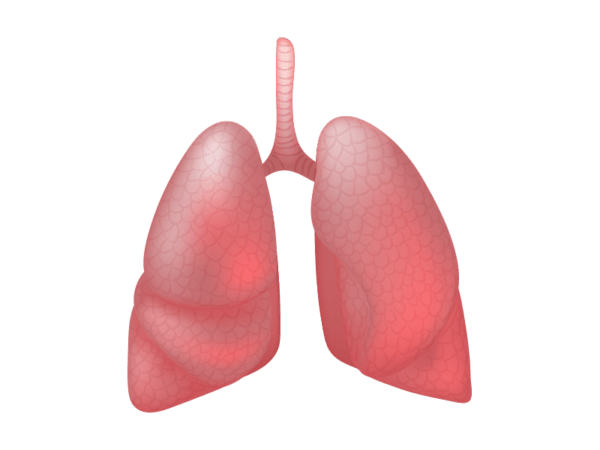What is Malignant Pleural Mesothelioma?
Pleural mesothelioma is a rare cancer of the pleura, a membrane that covers the lungs and the chest cavity. The most common form of mesothelioma, pleural mesothelioma is caused by exposure to asbestos. Treatment options can greatly improve a patient’s length and quality of life. We help patients find doctors and medical centers that specialize in treating pleural mesothelioma, as well as ways to pay for treatment.
Mesothelioma Help Center provides information about mesothelioma diagnosis, treatment, and financial and legal assistance. On this site you can learn about asbestos exposure and the different types of mesothelioma, connect with local mesothelioma medical experts, and find ways to pay for treatment.
Pleural mesothelioma is caused by the inhalation of asbestos fibers. Fibers that get lodged in the pleura cause inflammation, scarring, and genetic damage that leads to tumors. It usually takes 20 to 50 years between exposure to asbestos and diagnosis of pleural mesothelioma. The average age at the time of diagnosis is 69. Of the approximately 3,000 cases of mesothelioma diagnosed each year in the United States, about 75% are pleural.
Most pleural mesothelioma cases are the result of occupational asbestos exposure. Men are predominately affected because they were the majority of workers in industries such as shipbuilding and construction where asbestos was heavily used. While there is no cure for pleural mesothelioma and patients generally have poor prognoses, established and emerging therapies provide a survival benefit.
You are not alone in your fight against mesothelioma. We can help.
Pleural Mesothelioma Symptoms, Diagnosis, and Prognosis
Diagnosis of pleural mesothelioma is difficult due to the disease’s long latency period and the presence of symptoms that often mirror less serious health problems. The rareness of mesothelioma also means that many doctors have never encountered the disease and struggle to recognize it.
Early diagnosis, however, is correlated with longer survival times because there are usually more treatment options during earlier stages of the disease. Knowing that you were exposed to asbestos in the past can help doctors diagnose mesothelioma. If you experience the following symptoms and have a history of asbestos exposure, let your doctor know about the exposure to aid mesothelioma diagnosis.
- Shortness of breath
- Dry cough
- Coughing up blood
- Hoarseness
- Chest pain
- Fever/night sweats
- Excessive sweating
- Unexplained weight loss
- Difficulty swallowing
- Fatigue
- Swelling of the face and/or arms
Upon encountering these symptoms, your doctor may order a chest X-ray that could reveal fluid around the lungs or tumors. From there, you will likely be referred to a specialist such as a pulmonologist or oncologist. A specialist who has seen the disease in other patients has a much better chance of diagnosing mesothelioma. Diagnostic tools that can confirm mesothelioma include:
- CT and PET scans
- Blood tests
- Thoracoscopy (tissue biopsy)
Once mesothelioma is diagnosed, the cancer is staged. The stages of pleural mesothelioma indicate how far the cancer has progressed, the possibility of surgery, and the patient’s survival rate. Survival rate—based on statistics from thousands of pleural mesothelioma patients—is an estimate of how long the patient will live. Approximately 38 to 46 percent of stage I and II pleural mesothelioma patients survive 2 years after diagnosis, and 10 to 16 percent survive 5 years. Late stage diagnosis is associated with poorer survival rates.
The staging system used for pleural mesothelioma, called the TNM system, uses three criteria: the size of the tumor (T), the spread of the cancer to nearby lymph nodes (N), and the spread of the cancer to distant sites (M).
- Stage 1: Mesothelioma is in and around the pleura of one lung but has not spread to nearby lymph nodes or distant sites.
- Stage 2: The tumor has grown into all pleural surfaces on one side of the body and nearby lymph nodes on the same side of the body.
- Stage 3: Cancer has grown into nearby structures but not to distant sites. Surgery may still be possible.
- Stage 4: Cancer has spread to distant organs and the lung or pleura on the other side of the body.
Cancer stage is not the only factor that affects a patient’s prognosis. Patients who are younger, healthier, female, have certain types of cancer cells, and have normal blood counts tend to have longer survival times. Statistics, however, can’t predict the outcome of any individual patient. Some patients have lived for years with pleural mesothelioma as a result of receiving cancer treatment. And continuing improvements in treatment are leading to better survivorship.
Pleural Mesothelioma Treatment
Pleural mesothelioma treatment can aggressively seek to remove all of a patient’s cancer—including the entire diseased lung and other cancerous tissue—or aim to ease the patient’s symptoms and allow them to live more comfortably.
Treatment for pleural mesothelioma typically includes one or more of the following:
- Surgery
- Chemotherapy
- Radiation
- Targeted therapy
- Immunotherapy
Learn more about pleural mesothelioma treatment
Help For Pleural Mesothelioma Patients
Mesothelioma patients have never had more or better treatment options. For many long term survivors, mesothelioma has become a chronic, manageable disease and not a death sentence. The longer you survive, the better the chance that you will live to see the next major treatment breakthrough, or even a cure.
Financial assistance is available from many sources to help patients pay for treatment. You might be eligible for compensation from asbestos companies, government benefits, non-profit grants, and free or reduced services. We can help you get the money you deserve for the treatment you need. Learn more in our Free Guide Book or contact us for a free consultation.
Related topics

Pleural Mesothelioma

Peritoneal Mesothelioma

